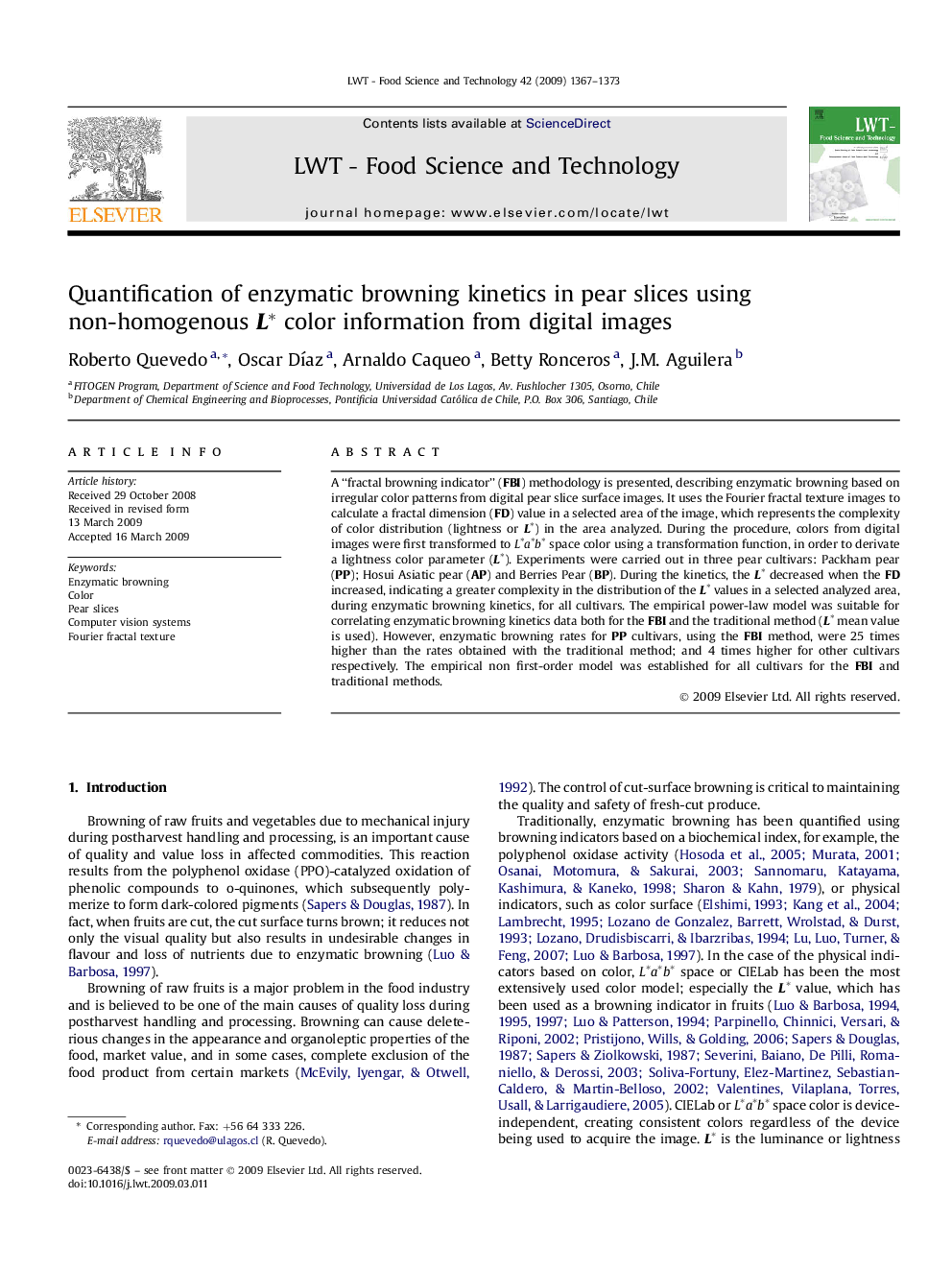| Article ID | Journal | Published Year | Pages | File Type |
|---|---|---|---|---|
| 4564612 | LWT - Food Science and Technology | 2009 | 7 Pages |
A “fractal browning indicator” (FBI) methodology is presented, describing enzymatic browning based on irregular color patterns from digital pear slice surface images. It uses the Fourier fractal texture images to calculate a fractal dimension (FD) value in a selected area of the image, which represents the complexity of color distribution (lightness or L∗) in the area analyzed. During the procedure, colors from digital images were first transformed to L∗a∗b∗ space color using a transformation function, in order to derivate a lightness color parameter (L∗). Experiments were carried out in three pear cultivars: Packham pear (PP); Hosui Asiatic pear (AP) and Berries Pear (BP). During the kinetics, the L∗ decreased when the FD increased, indicating a greater complexity in the distribution of the L∗ values in a selected analyzed area, during enzymatic browning kinetics, for all cultivars. The empirical power-law model was suitable for correlating enzymatic browning kinetics data both for the FBI and the traditional method (L∗ mean value is used). However, enzymatic browning rates for PP cultivars, using the FBI method, were 25 times higher than the rates obtained with the traditional method; and 4 times higher for other cultivars respectively. The empirical non first-order model was established for all cultivars for the FBI and traditional methods.
